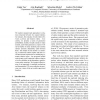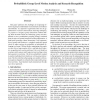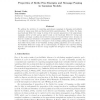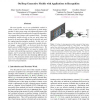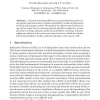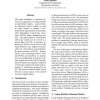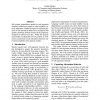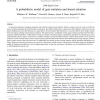EMNLP
2011
13 years 5 months ago
2011
We explore unsupervised approaches to relation extraction between two named entities; for instance, the semantic bornIn relation between a person and location entity. Concretely, ...
ICCV
2011
IEEE
13 years 5 months ago
2011
IEEE
This paper addresses the challenge of recognizing behavior of groups of individuals in unconstraint surveillance environments. As opposed to approaches that rely on agglomerative ...
JAIR
2011
13 years 8 months ago
2011
We address the problem of computing approximate marginals in Gaussian probabilistic models by using mean field and fractional Bethe approximations. We define the Gaussian fracti...
CVPR
2011
IEEE
14 years 1 months ago
2011
IEEE
The most popular way to use probabilistic models in vision is first to extract some descriptors of small image patches or object parts using well-engineered features, and then to...
ICTIR
2009
Springer
14 years 3 months ago
2009
Springer
Abstract. A mismatch between differenteventspaceshasbeen used toargue against rank equivalence of classic probabilistic models of information retrieval and language models. We ques...
ACL
2010
14 years 3 months ago
2010
This paper establishes a connection between two apparently very different kinds of probabilistic models. Latent Dirichlet Allocation (LDA) models are used as "topic models&qu...
COLING
2002
14 years 5 months ago
2002
We evaluate probabilistic models of verb argument structure trained on a corpus of verbs and their syntactic arguments. Models designed to represent patterns of verb alternation b...
BMCBI
2005
14 years 5 months ago
2005
Background: Probabilistic models for sequence comparison (such as hidden Markov models and pair hidden Markov models for proteins and mRNAs, or their context-free grammar counterp...
SIGIR
2008
ACM
14 years 5 months ago
2008
ACM
The approach of using passage-level evidence for document retrieval has shown mixed results when it is applied to a variety of test beds with different characteristics. One main r...
NN
2006
Springer
14 years 5 months ago
2006
Springer
An important component of language acquisition and cognitive learning is gaze imitation. Infants as young as one year of age can follow the gaze of an adult to determine the objec...
